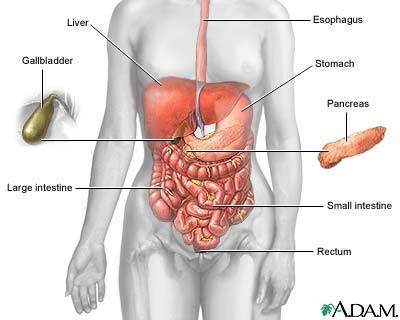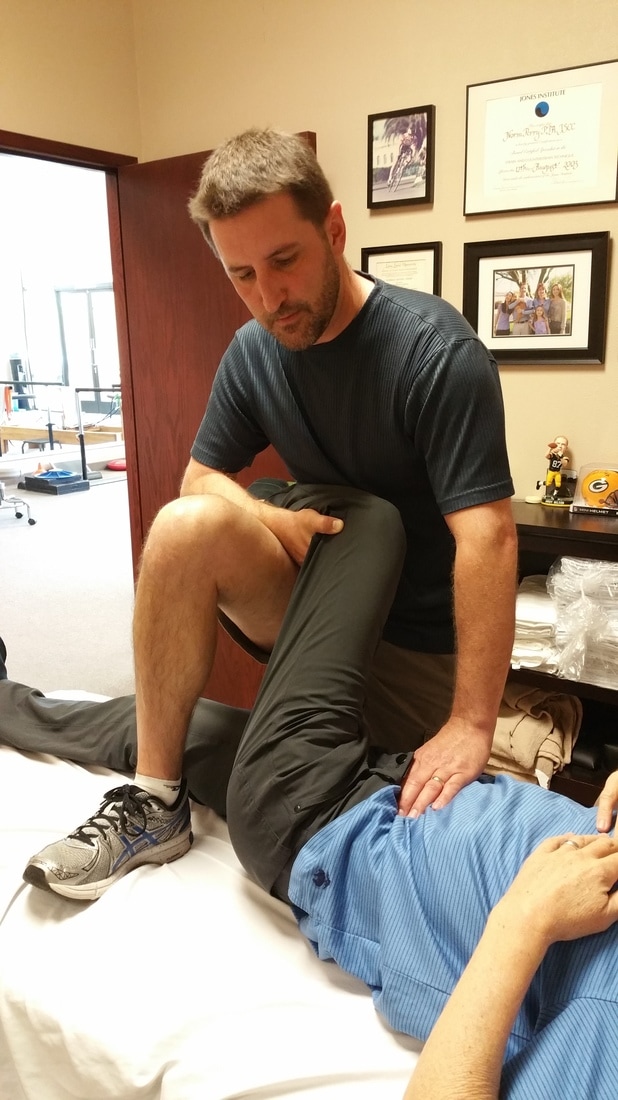|
The viscera is a medical term for the body's internal organs, e.g., the liver, gallbladder, and intestines. Fascia is the connective tissue of the body. Fascia attaches and envelops all of our organs and connects them to each other and to the abdominal wall. The fascia gives our body stability, but also provides mobility through elongation and stretch. When the fascia becomes restricted, it can result in pain and potential organ dysfunction.
Fascial Restrictions Medical literature has well documented the potential for fascia to become scarred or restricted following a surgical procedure. Once thought to be a rigid structure of the body, research has shown that fascia is actually CONTRACTILE. This information comes from 10 years of connective tissue research in Europe. [Reference: Fasica is able to contract in a smooth muscle like manner and influence musculoskeletal mechanics - Schleip, Klinger.] The viscera (Photo © A.D.A.M.)
|
Contractility of Fascia
Fascia contains myofibroblasts. Myofibroblasts are collagen forming cells with smooth muscle characteristics. What this means is that fascia can contract, causing pain and restrictions just like our muscles do. When fascia contracts it can stimulate the muscle stretch receptors and present symptomatically like chronic musculoskeletal pain. In other words, the low back pain you are feeling may stem from a visceral fascial restriction. Therefore, conventional methods not addressing the contracted fascia may not be as effective in treatment.
The Counterstrain Treatment
Treatment for deep fascial structures is very similar to Musculoskeletal Counterstrain. We can gently manipulate the involved organ to shorten the affected fascia, thereby releasing the painful restriction. Visceral Counterstrain requires the detailed knowledge and understanding of the main fascial structures as well as their orientation. This treatment can also directly impact the function of the organs themselves. This is due to the combined autonomic innervation of the fascia and organ. Visceral Counterstrain is only recommended for visceral complaints that have been thoroughly evaluated by a physician for disease.
Visceral Fascia
Visceral Fascia is a connective tissue covering the viscera, or internal organs. These tissue bridge the gap between organs and connect them to the rib cage, sternum, and pelvis. Some well known visceral fascia include the pleura (lunges), pericardium (heart), and the peritoneum (intestines). Visceral fascia connect to the spinal cord via nerve connectors, therefore it contains pain receptors. This means that dysfunctional visceral fascia can cause chronic back pain, IBS, and muscle tightness.
Fascia contains myofibroblasts. Myofibroblasts are collagen forming cells with smooth muscle characteristics. What this means is that fascia can contract, causing pain and restrictions just like our muscles do. When fascia contracts it can stimulate the muscle stretch receptors and present symptomatically like chronic musculoskeletal pain. In other words, the low back pain you are feeling may stem from a visceral fascial restriction. Therefore, conventional methods not addressing the contracted fascia may not be as effective in treatment.
The Counterstrain Treatment
Treatment for deep fascial structures is very similar to Musculoskeletal Counterstrain. We can gently manipulate the involved organ to shorten the affected fascia, thereby releasing the painful restriction. Visceral Counterstrain requires the detailed knowledge and understanding of the main fascial structures as well as their orientation. This treatment can also directly impact the function of the organs themselves. This is due to the combined autonomic innervation of the fascia and organ. Visceral Counterstrain is only recommended for visceral complaints that have been thoroughly evaluated by a physician for disease.
Visceral Fascia
Visceral Fascia is a connective tissue covering the viscera, or internal organs. These tissue bridge the gap between organs and connect them to the rib cage, sternum, and pelvis. Some well known visceral fascia include the pleura (lunges), pericardium (heart), and the peritoneum (intestines). Visceral fascia connect to the spinal cord via nerve connectors, therefore it contains pain receptors. This means that dysfunctional visceral fascia can cause chronic back pain, IBS, and muscle tightness.
|
44025 Jefferson St., Ste 104
La Quinta, CA 92253 |
Phone: (760) 345-5453
Fax: (760) 345-7063 |
Hours of Operation:
Mon - Friday 7:30am - 6:00pm Closed weekends and major holidays |
Proudly powered by Weebly

